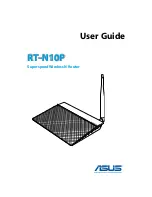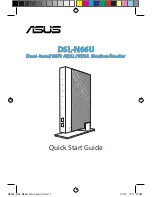
Channel:
The bandwidth which wireless Radio operates is divided into several
segments, which we call them “Channels”. AP and the client stations that it
associated work in one of the channels.
CSMA/CA:
In local area networking, this is the CSMA technique that combines
slotted time -division multiplexing with carrier sense multiple access/collision
detection (CSMA/CD) to avoid having collisions occur a second time. This
works best if the time allocated is short compared to packet length and if the
number of situations is small.
CSMA/CD:
Carrier Sense Multiple Access/Collision Detection, which is a LAN
access method used in Ethernet. When a device wants to gain access to the
network, it checks to see if the network is quiet (senses the carrier). If it is not, it
waits a random amount of time before retrying. If the network is quiet and two
devices access the line at exactly the same time, their signals collide. When the
collision is detected, they both back off and wait a random amount of time
before retrying.
DHCP:
Dynamic Host Configuration Protocol, which is a protocol that lets
network administrators manage and allocate Internet Protocol (IP) addresses in
a network. Every computer has to have an IP address in order to
communicate with each other in a TCP/IP based infrastructure network. Without
DHCP, each computer must be entered in manually the IP address. DHCP
enables the network administrators to assign the IP from a central location and
each computer receives an IP address upon plugged with the Ethernet cable
everywhere on the network.
DSSS:
Direct Sequence Spread Spectrum. DSSS generates a redundant bit
pattern for each bit to be transmitted. This bit pattern is called a chip (or
chipping code). The longer the chip, the greater the probability that the original
data can be recovered. Even if one or more bits in the chip are damaged during
transmission, statistical techniques embedded in the radio can recover the
original data without the need for retransmission. To an unintended receiver,
DSSS appears as low power wideband noise and is rejected (ignored) by most
narrowband receivers.
Dynamic IP Address:
An IP address that is assigned automatically to a client
station in a TCP/IP network by a DHCP server.
Encryption:
A security method that uses a specific algorithm to alter the data
transmitted, thus prevent others from knowing the information transmitted.
ESS:
ESS stands for “Extended Service Set”. More than one BSS is configured
to become Extended Service Set. LAN mobile users can roam between
different BSSs in an ESS.
73
Summary of Contents for 54MBPS WIRELESS LAN POCKET ACCESS POINT
Page 1: ...54Mbps Wireless LAN Pocket Access Point USER MANUAL...
Page 23: ...Now the main menu screen is popup 20...
Page 41: ...PPPoE with a fixed IP address 38...
Page 42: ...PPTP 39...






































